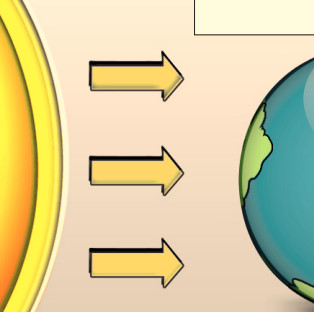Increased CO2 levels in the atmosphere are buffered by the oceans, as they absorb roughly 30 % of this CO2. The negative consequences of this are that the oceans become more acidic. The CO2 reacts with water and carbonate to form carbonic acid, reducing the available carbonate that shellfish, crabs and corals combine with calcium to make hard shells and skeletons.
Curriculum Links: Core chemistry AQA GCSE
4.2.4 The pH scale
9.1.2 The Earth´s early atmosphere
9.2.3. Global climate change
Chemistry in the activity
Na2CO3 + 2 CH3COOH → 2 CH3COONa + CO2 + H2O (Bicarbonate of soda reacts with vinegar to form carbon dioxide)
In this experiment the students will initiate a reaction that produces CO2 in an enclosed water-air environment. The CO2 formed will be absorbed into the water, making it more acidic and changing the colour of the indicator. The experiment can be carried out in pairs and takes about 15 minutes. An additional experiment to test the solubility of CO2 in warm and cold water can be carried out afterwards, explaining how global warming can affect marine CO2 absorption.
Materials
- Bicarbonate of soda (baking soda)
- White vinegar
- Bromothymol blue Indicator (diluted with water: 8 ml bromothymol blue (0.04% aqueous) to 1 litre of water)
- 2 x 500 ml Beakers
- Small plastic or paper cup (100 ml)
- Masking tape
- 2 x Petri dishes or lid for large beakers
- Teaspoon or 5 ml measuring cylinder
- Two sheets of white paper
- Safety glasses and lab coat
See the student worksheets for the detailed preparation: Ocean acidification and CO2 Absorption
Application to the World’s Oceans
The beaker is like an enclosed ocean-atmosphere and the CO2 from the reaction will equilibrate between the water and the air. Our oceans absorb more CO2 when the concentration in the atmosphere increases. But how much CO2 can they keep absorbing? Will they reach a saturation point?
Corals and shellfish are affected by ocean acidification, making it harder to create their shells, which will affect other fish up through the food web. Global warming caused by the increased CO2 effects the corals and fish as only slight changes in the temperature of the water can have effects throughout the ocean´s food chain. So there is a knock-on effect or a positive-feedback from the ocean heating and the ocean acidification.
If you want to illustrate more about the feedbacks and this double impact, the next experiment demonstrates the effect of a temperature increase on CO2 absorption, thus limiting the water´s capacity to absorb as much CO2.
CO2 Absorption in Water class practical
This experiment allows students to determine how much CO2 dissolves in warm or cold water.
See the student worksheet for the detailed preparation.
Materials
- Water
- Effervescent fizz tablets
- Ice (optional)
- 2 x 500 ml measuring cylinders
- 2 x Petri dishes that fit over the cylinders
- Bowl or container (at least 5 litres)
- Stand and clamp to hold cylinders
- Water heater
- Funnel
Application to the World’s Oceans:
More CO2 has escaped from the warm water, showing that it cannot absorb as much CO2. Warmer oceans will not be as effective buffers at removing CO2 from the atmosphere. However, this phenomenon does prevent these warmer oceans from being as acidic.
References
- National Oceanic and Atmospheric Administration (NOAA) Ocean acidification Educational resources
- Exploratorium Science snacks, Ocean Acidification in a Cup
- CarboEurope cold and hot water CO2 absorption experiment
- For a follow-up class: CarboEurope: Uptake of Carbon Dioxide from Water by Plants
- Ideas from Science in School



